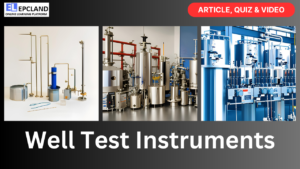When it comes to selecting the right alloy steel pipes for your project, the choice between ASTM A335 and ASTM A213 is crucial. These two standards are commonly used in the oil, gas, petrochemical, and power generation industries. In this comprehensive guide, we’ll delve into the specifics of ASTM A335 vs. ASTM A213, highlighting their differences, applications, and unique properties. Whether you’re a seasoned professional or new to the field, understanding these standards will help you make an informed decision for your piping needs.
Table of Contents
Do not miss the detailed course 7 Modules of Piping Codes & Standards
Enrollment link
Check out the Similar Articles on ASTM Standards
Introduction
Alloy steel pipes find extensive use in industries where high-temperature and high-pressure applications are common. Two key standards for alloy steel pipes are ASTM A335 and ASTM A213, each tailored to specific requirements. Understanding the distinctions between these standards is crucial for selecting the right pipe for your project.
The Importance of Alloy Steel Pipes
Alloy steel pipes are essential in industries such as power generation, petrochemicals, and refineries, where they withstand extreme conditions and provide reliable performance.
The Role of ASTM Standards
ASTM standards ensure the quality, consistency, and performance of alloy steel pipes, making them a cornerstone of industrial infrastructure.
Do not miss the detailed course 7 Modules of Piping Codes & Standards
Enrollment link
ASTM A335: Seamless Ferritic Alloy Steel Pipe
ASTM A335 is a standard specification for seamless ferritic alloy steel pipe intended for high-temperature applications. It covers nominal wall and minimum wall thickness pipe.
ASTM A335 Grades
- P5: Suitable for power plant piping where elevated temperature service is required.
- P9: Used in refineries for high-temperature service, including flanges and fittings.
- P22: Resistant to corrosion and excellent for use in steam boilers and pressure vessel components.
Chemical Composition of ASTM A335 Grades
| Element | P5 | P9 | P22 |
|---|---|---|---|
| Carbon (C) | 0.15% max | 0.15% max | 0.05-0.15% |
| Manganese (Mn) | 0.30-0.60% | 0.30-0.60% | 0.30-0.60% |
| Phosphorus (P) | 0.025% max | 0.025% max | 0.025% max |
| Sulfur (S) | 0.025% max | 0.025% max | 0.025% max |
| Silicon (Si) | 0.50% max | 0.25-1.00% | 0.50% max |
| Chromium (Cr) | 4.00-6.00% | 8.00-10.00% | 1.90-2.60% |
| Molybdenum (Mo) | 0.45-0.65% | 0.90-1.10% | 0.87-1.13% |
Mechanical Properties of ASTM A335 Grades
| Property | P5 | P9 | P22 |
|---|---|---|---|
| Tensile Strength | 60,000 psi (415 MPa) | 60,000 psi (415 MPa) | 60,000 psi (415 MPa) |
| Yield Strength | 30,000 psi (205 MPa) | 30,000 psi (205 MPa) | 30,000 psi (205 MPa) |
| Elongation | 30% min | 30% min | 30% min |
| Hardness (Brinell) | 163 max | 163 max | 163 max |
ASTM A213: Seamless Ferritic and Austenitic Alloy Steel Boiler, Superheater, and Heat-Exchanger Tubes
ASTM A213 is a standard specification for seamless ferritic and austenitic alloy steel boiler, superheater, and heat-exchanger tubes.
ASTM A213 Grades
- T5: Ideal for heat exchangers and condenser tubes.
- T9: Used in high-temperature applications, including superheaters and reheaters.
- T22: Excellent corrosion resistance, suitable for boiler tubes and pressure vessel components.
Chemical Composition of ASTM A213 Grades
| Element | T5 | T9 | T22 |
|---|---|---|---|
| Carbon (C) | 0.15% max | 0.15% max | 0.05-0.15% |
| Manganese (Mn) | 0.30-0.60% | 0.30-0.60% | 0.30-0.60% |
| Phosphorus (P) | 0.025% max | 0.025% max | 0.025% max |
| Sulfur (S) | 0.025% max | 0.025% max | 0.025% max |
| Silicon (Si) | 0.50% max | 0.25-1.00% | 0.50% max |
| Chromium (Cr) | 4.00-6.00% | 8.00-10.00% | 1.90-2.60% |
| Molybdenum (Mo) | 0.45-0.65% | 0.90-1.10% | 0.87-1.13% |
Mechanical Properties of ASTM A213 Grades
| Property | T5 | T9 | T22 |
|---|---|---|---|
| Tensile Strength | 60,000 psi (415 MPa) | 60,000 psi (415 MPa) | 60,000 psi (415 MPa) |
| Yield Strength | 30,000 psi (205 MPa) | 30,000 psi (205 MPa) | 30,000 psi (205 MPa) |
| Elongation | 30% min | 30% min | 30% min |
| Hardness (Brinell) | 163 max | 163 max | 163 max |
Do not miss the detailed course 7 Modules of Piping Codes & Standards
Enrollment link
Differences Between ASTM A335 and ASTM A213
ASTM A335 and ASTM A213 cater to different applications and have notable distinctions.
| Difference | ASTM A335 | ASTM A213 |
|---|---|---|
| Application Focus | Designed for high-temperature applications, including power plant piping and high-pressure environments. | Geared towards boiler, superheater, and heat-exchanger tubes, often used in thermal and heat transfer equipment. |
| Usage in Power Plants | Commonly used in power plant piping systems for elevated temperature service. | Not typically used in power plant piping but extensively used in boiler and heat exchanger applications. |
| Composition Flexibility | Offers a broader range of alloy compositions for various temperature and corrosion requirements. | More limited in composition but highly effective in boiler and heat-exchanger environments. |
| Wall Thickness | Covers both nominal wall and minimum wall thickness pipe. | Focuses on seamless tubes with thinner walls, suitable for heat exchangers and similar applications. |
Quality Control & Testing
Both ASTM A335 and ASTM A213 adhere to stringent quality control measures to ensure compliance with specifications. Key quality control measures include:
| Quality Control Measure | ASTM A335 | ASTM A213 |
|---|---|---|
| Chemical Analysis | Rigorous chemical analysis to verify the elemental composition. | Rigorous chemical analysis to verify the elemental composition. |
| Mechanical Testing | Mechanical testing, including tensile and yield strength tests. | Mechanical testing, including tensile and yield strength tests. |
| Non-Destructive Testing (NDT) | Non-destructive testing methods like ultrasonic testing (UT) and radiographic testing (RT). | Non-destructive testing methods like ultrasonic testing (UT) and radiographic testing (RT). |
| Visual Inspection | Visual inspection for surface imperfections, weld defects, and dimensional conformity. | Visual inspection for surface imperfections, weld defects, and dimensional conformity. |
ASTM A335 vs. ASTM A213: Exploring the Distinctions
Understanding ASTM A335
ASTM A335 is a standard specification for seamless ferritic alloy steel pipe intended for high-temperature service. It covers various grades ranging from P1 to P91, each designed to meet specific temperature and pressure requirements. These pipes are commonly used in industries where elevated temperatures and pressures are encountered, such as power plants, refineries, and chemical plants.
Don’t miss the Complete Course on Piping Engineering: Check Now
By EPCLand.com
Do not miss the detailed course 7 Modules of Piping Codes & Standards
Enrollment link
Comparing Key Properties
Temperature and Pressure Ranges
- ASTM A335: These pipes are designed to withstand high temperatures and pressures, making them suitable for applications involving steam and high-temperature fluids.
- ASTM A213: These tubes excel in environments where both corrosion resistance and heat transfer efficiency are crucial.
Corrosion Resistance
- ASTM A335: While corrosion resistance is important, it’s not the primary focus of these pipes, as they’re primarily used for high-temperature service.
- ASTM A213: Corrosion resistance is a key feature of these tubes, making them ideal for applications where contact with corrosive substances is frequent.
Mechanical Properties
- ASTM A335: Mechanical properties like tensile strength and yield strength are vital due to the high-temperature conditions these pipes operate in.
- ASTM A213: These tubes maintain excellent mechanical properties, catering to both high-temperature and corrosive environments.
Applications
- ASTM A335: Widely used in power plants, refineries, and chemical plants for transporting high-temperature fluids.
- ASTM A213: Commonly found in boilers, heat exchangers, and condensers, where both heat transfer efficiency and corrosion resistance are paramount.
Making the Right Choice
When deciding between ASTM A335 and ASTM A213, consider the specific requirements of your project. Evaluate factors such as temperature, pressure, corrosion risk, and mechanical properties. Consulting with experienced professionals can provide valuable insights tailored to your needs.
Do not miss the detailed course 7 Modules of Piping Codes & Standards
Enrollment link
FAQs
Are ASTM A335 and ASTM A213 interchangeable?
While both standards involve alloy steel pipes, they serve different purposes. ASTM A335 is intended for high-temperature service, whereas ASTM A213 is focused on heat exchangers, superheaters, and boilers. Therefore, they are not interchangeable.
Can ASTM A335 pipes be used in corrosive environments?
ASTM A335 pipes are primarily designed for high-temperature applications, and while they possess some level of corrosion resistance, they might not be the best choice for highly corrosive environments where ASTM A213 tubes excel.
What are some common applications of ASTM A213 tubes?
ASTM A213 tubes find extensive use in industries where heat transfer efficiency and corrosion resistance are critical. Common applications include boilers, heat exchangers, and condensers in power plants and industrial settings.
Is there a notable price difference between ASTM A335 and ASTM A213 pipes?
The cost difference between ASTM A335 and ASTM A213 pipes can vary based on factors such as grade, size, and quantity. Generally, ASTM A213 tubes might be slightly more expensive due to their enhanced corrosion resistance properties.
Can I use ASTM A335 pipes for low-temperature applications?
While ASTM A335 pipes are designed for high-temperature service, some grades offer reasonable toughness at lower temperatures. However, for dedicated low-temperature applications, it’s advisable to explore other options.
How can I ensure the longevity of ASTM A213 tubes in corrosive environments?
Proper material selection, regular maintenance, and adhering to recommended operating conditions are key to ensuring the longevity of ASTM A213 tubes in corrosive environments.
Do not miss the detailed course 7 Modules of Piping Codes & Standards
Enrollment link
Conclusion:
Understanding the distinctions between ASTM A335 and ASTM A213 is pivotal when selecting alloy steel pipes for your project. Consider the unique properties, applications, and requirements of each standard to make an informed decision. By doing so, you’ll ensure the successful and efficient operation of your systems in various industrial applications.
Recommended courses (Published on EPCLand):
- Basics of Piping Engineering
- Piping Layout Engineering
- Piping Material Engineering
- Piping Stress Analysis
- Complete Course on Piping Engineering
- Material Requisitions
- Piping Material Specifications
- Valve Material Specifications
Related Video
Attempt Quiz
Question 1:
What does ASTM A335 refer to?
Explanation: ASTM A335 is a standard specification for seamless ferritic alloy-steel pipe intended for high-temperature service. It covers various grades of alloy steel pipes used in high-temperature environments.
Question 2:
What does ASTM A213 refer to?
Explanation: ASTM A213 is a standard specification for seamless ferritic and austenitic alloy-steel boiler, superheater, and heat-exchanger tubes. It covers various grades of alloy steel tubes used in boiler and heat-exchanger applications.
Question 3:
What is the primary difference between ASTM A335 and ASTM A213?
Explanation: The primary difference between ASTM A335 and ASTM A213 is that A335 covers seamless ferritic alloy-steel pipes for high-temperature service, while A213 covers seamless ferritic and austenitic alloy-steel tubes for boiler, superheater, and heat-exchanger applications.
Question 4:
Which of the following applications is more likely to use ASTM A335 pipes?
Explanation: ASTM A335 pipes are more likely to be used in high-temperature applications such as superheater tubes in power plants, where the alloy steel’s high-temperature strength and resistance are crucial.
Question 5:
What type of alloys are commonly used in both ASTM A335 and ASTM A213 specifications?
Explanation: Both ASTM A335 and ASTM A213 specifications involve various grades of alloy steel, which can include different alloying elements to provide specific properties such as high-temperature strength and corrosion resistance.



